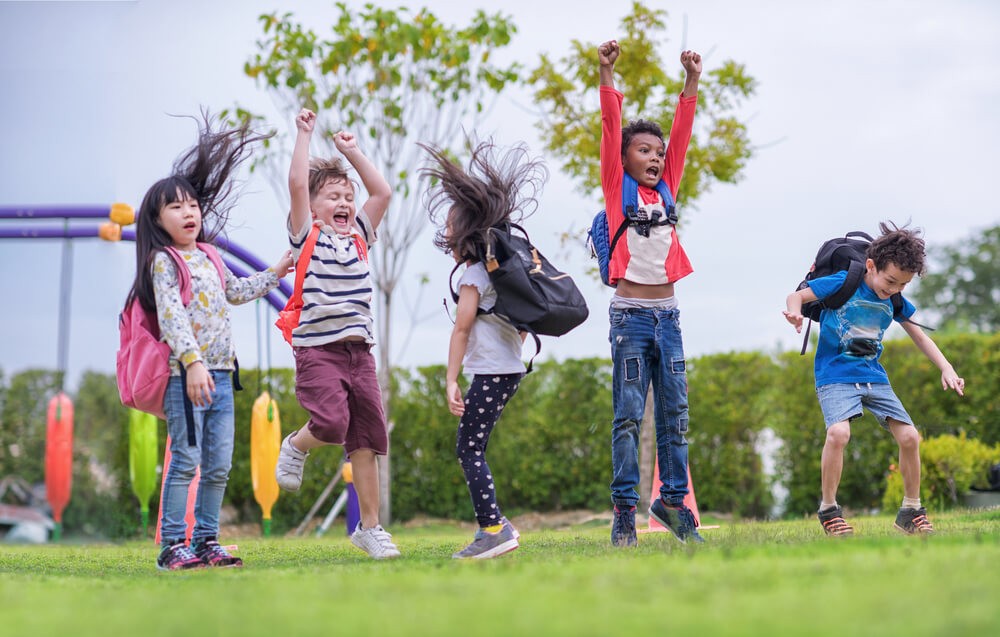10 Fun and Engaging After-School Activities for Kids
Jan 26, 2025
Read: The Advantages of After-School Coding Programs for Teens
Read: What is the Right Age to Start Coding?
Read: Is Coding a Good Career Path? Exploring Opportunities and Salaries
After a busy day at school, kids need a fun way to unwind, but that doesn't mean they can’t keep learning and developing new skills. As technology becomes an increasingly important part of our lives, after-school activities that blend fun with creativity and productivity are in high demand. Whether you want to spark creativity, get your child moving, or introduce them to coding, there are plenty of ways to make the after-school hours both entertaining and educational.
In this blog post, we’ll share 10 fantastic after-school activities for kids—including some exciting coding projects that will help your child develop critical thinking, problem-solving, and tech skills!
1. Creative Arts and Crafts for Kids
Arts and crafts are classic, relaxing after-school activities that allow kids to express their creativity. Whether it’s drawing, painting, or building something out of recycled materials, crafts help develop fine motor skills and encourage imaginative thinking.
Ideas for crafts include:
DIY greeting cards: Let kids design their own cards for birthdays or holidays.
Painting and drawing: Create art using watercolors, acrylics, or colored pencils.
Clay modeling: Craft animals, shapes, or even mini sculptures.
Recycled art: Use items like cardboard, bottle caps, and old magazines for unique art projects.
While arts and crafts are great for building creativity, they also teach kids about colors, shapes, and textures, making them a perfect activity for winding down after a busy day at school.
2. Outdoor Activities: Nature Walks and Bike Rides
Getting outside is a great way for kids to burn off energy while learning about the world around them. Whether it’s a simple nature walk or an adventurous bike ride, physical activities in nature are both fun and educational.
Here’s how to make your outdoor adventure more engaging:
Scavenger hunt: Create a list of things to find during the walk—like a bird, a particular leaf, or a colorful flower.
Bird watching: Bring a notebook to sketch and identify different birds.
Biking challenge: Set goals like racing each other around a park or trying a new biking trail.
Physical activities like biking and walking not only improve fitness but also give kids a chance to observe nature and stay active after school.
3. Reading Together: Building a Family Reading Routine
Reading is essential for child development and can be a calming and rewarding after-school activity. You can build a reading habit that fosters literacy, comprehension, and communication skills, all while spending quality time together.
Ways to make reading more enjoyable:
Read aloud together: Take turns reading a chapter or a page.
Start a family book club: Pick books that everyone can enjoy and discuss them together.
Library adventures: Let kids choose their own books from the library and explore new genres like fantasy, adventure, or even non-fiction.
Reading not only enhances vocabulary but also promotes critical thinking, making it a perfect bonding activity.
4. Science Experiments: Fun and Educational
After-school science experiments are a fantastic way to get kids thinking and problem-solving, and they can be as simple or complex as you like. These hands-on activities stimulate curiosity about the world around us.
Some easy, fun science experiments:
DIY volcano: Use baking soda, vinegar, and food coloring for an exciting eruption.
Crystal-growing: Watch salt or sugar crystals grow over the course of a few days.
Make slime: Use common household ingredients like glue, baking soda, and contact solution.
These experiments teach kids the basics of chemistry, biology, and physics in an interactive and fun way.
5. Coding for Kids: Fun Programming Projects
Coding is one of the most valuable skills kids can learn today. After-school coding activities provide kids with a fun, hands-on way to understand programming concepts like logic, problem-solving, and creativity. Plus, it can set them up for a future in tech.
Here are a few coding activities to try:
Create a game using Scratch: Scratch is a beginner-friendly, visual programming language that lets kids build their own interactive games and animations. Perfect for ages 8 and up, it teaches kids about loops, conditionals, and other programming basics.
Build a simple website: Teach kids HTML and CSS to help them design their own web pages. They can customize colors, fonts, and layouts as they learn the basics of web design.
Try coding with Tynker or Code.org: These platforms offer free, interactive coding lessons where kids can learn programming by creating everything from games to apps. They also introduce kids to languages like JavaScript and Python.
Create an interactive story with Twine: Twine is a simple tool that allows kids to create their own interactive stories. This is a great way to combine storytelling with coding, especially for kids interested in writing and narrative design.
Coding not only teaches technical skills but also boosts creativity and critical thinking, as kids learn to solve problems and bring their ideas to life.
Read: Pinecone Kids Coding Academy: What Makes Us Different
Read: Which Coding Program is Best for Your Child? Winter Camp, Summer Camp, or After-School Coding Classes
6. Cook or Bake Together: Fun in the Kitchen
Cooking and baking provide a wonderful opportunity to teach your kids about nutrition, measurement, and patience. Plus, it’s a hands-on activity that ends with something delicious!
Some easy cooking ideas include:
Bake cookies: Choose your favorite recipe and let kids help with mixing, rolling, and decorating.
Make homemade pizzas: Allow kids to choose their own toppings and help assemble their mini pizzas.
Create smoothies: Blend together fruits, yogurt, and juice for a healthy snack.
DIY snack time: Make your own granola bars, trail mix, or healthy muffins.
Cooking activities teach math (measuring ingredients), science (baking reactions), and fine motor skills, all while allowing your child to enjoy a tasty treat.
7. Board Games and Puzzles: Problem-Solving Fun
Board games and puzzles are fantastic ways to develop problem-solving skills, teamwork, and patience, all while having fun together as a family.
Some great games include:
Monopoly: Teach kids about money management and strategy.
Scrabble: A fun way to improve vocabulary and spelling.
Jigsaw puzzles: Work together to complete a challenging puzzle, improving focus and spatial skills.
Catan: A strategy game where kids learn resource management and negotiation.
These games promote social skills and encourage children to think critically and strategically.
8. Backyard Obstacle Course: Physical Fun
After sitting in school all day, kids love to get active. A backyard obstacle course is a great way for them to burn off energy while developing their motor skills and coordination.
How to create an obstacle course:
Crawl under tables or chairs.
Jump over obstacles: Use pillows or hula hoops to create jumping stations.
Balance challenges: Use a wooden beam or a line of tape on the ground for balance practice.
Timed race: Have kids race against each other or the clock to see who can complete the course the fastest.
This activity encourages kids to stay active and learn to work on their strength and agility, all while having fun.
9. Practice a New Skill Together
After school is a great time to explore new hobbies or improve skills that your child is interested in. Whether it's sports, music, or even a new language, practicing something new encourages perseverance and builds confidence.
Examples include:
Learn an instrument: If your child is interested in music, try learning a simple song together on an instrument like the piano or guitar.
Sports practice: Help kids practice soccer drills, basketball shots, or even dance moves.
Language learning: Try learning a new language together using apps like Duolingo or Babbel.
Introducing kids to new skills teaches them the importance of hard work and helps them develop interests they may continue to pursue as they get older.
10. Family Movie Night: Relax and Unwind
After a busy day, sometimes the best way to unwind is with a family movie night. Watching a movie together can spark discussions about the plot, characters, and themes, and it’s a great way to bond.
Ideas for a great movie night:
Pick a theme: Choose movies around a specific theme—like superhero movies, animated classics, or family comedies.
Create a movie snack bar: Prepare some popcorn, smoothies, or homemade treats to enjoy during the movie.
Discuss the movie: Afterward, talk about the movie’s lessons, characters, and what everyone enjoyed the most.
Movie nights are a simple and enjoyable way to relax and connect as a family.
—-
The after-school hours are a valuable time to bond with your kids, help them explore new interests, and foster their creativity and learning. Whether you're diving into fun coding projects, exploring nature, or simply enjoying a movie together, these activities are perfect for keeping kids entertained, engaged, and growing. And with the inclusion of coding activities, you can give your child a head start in an increasingly tech-driven world.
Try a few of these ideas today and make the most of your after-school time with your kids!
Read: Choosing After-School Programs That Best Fit Your Kids' and Teens' Future: A Parent's Guide to Matching Activities with Interests and Personality
Read: Why Every Teenager Should Learn Coding: Top Benefits for Teens and Parents
Read: What is the Most Popular After-School Activity?
Pinecone Coding Academy's Kids Coding Program
At Pinecone Coding Academy, we are passionate about making coding accessible and enjoyable for kids aged 8-17. Our program is designed to inspire and equip young learners with the skills they need to thrive in the digital world.
Click here to discover a coding class that matches your teen's or child's interests.
What We Offer:
Engaging Curriculum: Our courses introduce students to popular programming languages like Python, JavaScript, and HTML/CSS, laying a strong foundation for future learning.
Hands-On Projects: Students participate in project-based learning, creating real applications that they can showcase, from interactive games to personal websites.
Mentorship and Support: Our experienced instructors provide guidance, helping students navigate challenges and discover their coding potential.
Community Connection: By joining Pinecone, students become part of a vibrant community of peers, fostering collaboration and friendship as they learn.
Try a Free Session!
If your child is curious about coding, Pinecone Coding Academy offers a free introductory session for kids aged 8-17. This is a fantastic opportunity to explore programming in a fun and engaging way.
More blogs







